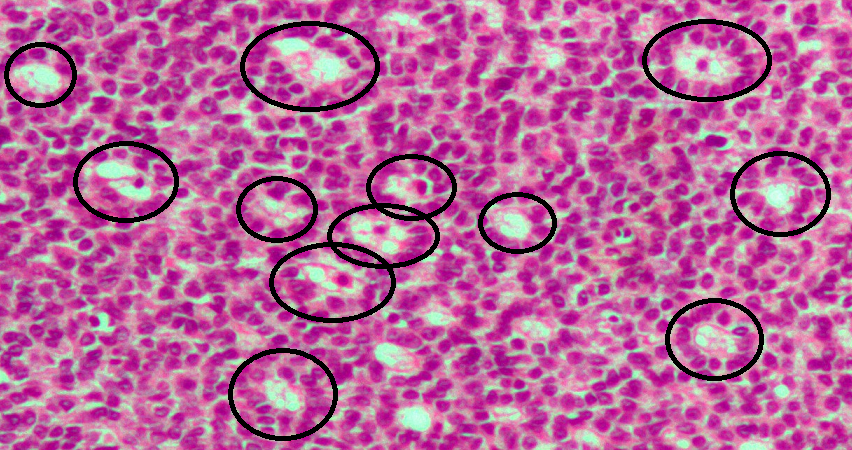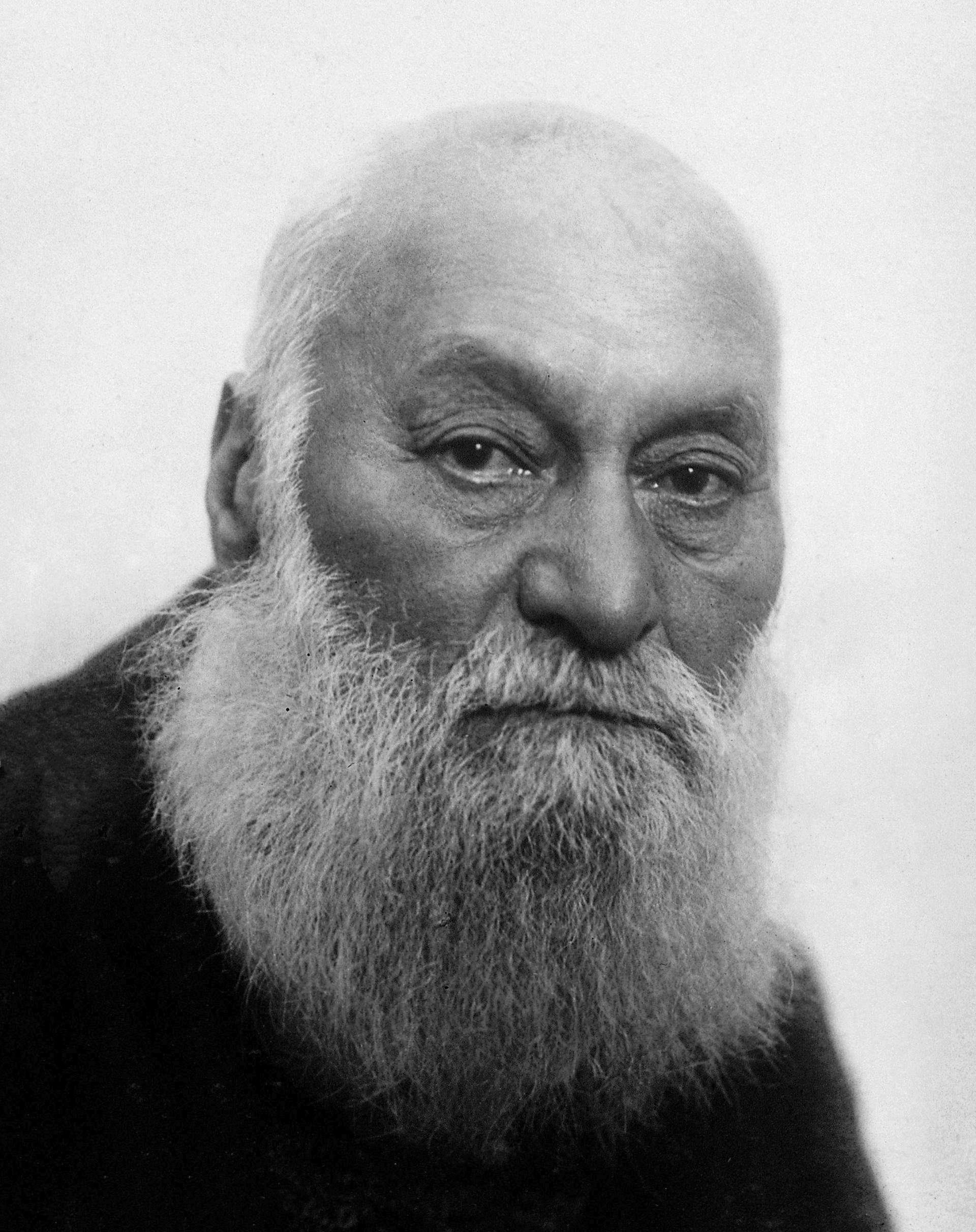|
Call–Exner Bodies
Call–Exner bodies, giving a follicle-like appearance, are small eosinophilic fluid-filled punched out spaces between granulosa cells. The granulosa cells are usually arranged haphazardly around the space. They are pathognomonic for granulosa cell tumors. Histologically, these tumors consists of monotonous islands of granulosa cells with "coffee-bean" nuclei. That same nuclear groove appearance noted in Brenner tumour, an epithelial-stromal ovarian tumor distinguishable by nests of transitional epithelial cells (urothelial) with longitudinal nuclear grooves (coffee bean nuclei) in abundant fibrous stroma. They are composed of membrane-packaged secretion of granulosa cells and have relations to the formation of liquor folliculi which are seen among closely arranged granulosa cells. They are named for Emma Louise Call (1847–1937), an American physician, and Sigmund Exner Sigmund Exner (also ''Sigmund Exner'', ''Siegmund Exner-Ewarten'', ''Siegmund Exner Ritter von Ewarten' ... [...More Info...] [...Related Items...] OR: [Wikipedia] [Google] [Baidu] |
Eosinophilic
Eosinophilic (Greek suffix -phil-, meaning ''loves eosin'') is the staining of tissues, cells, or organelles after they have been washed with eosin, a dye. Eosin is an acidic dye for staining cell cytoplasm, collagen, and muscle fibers. ''Eosinophilic'' describes the appearance of cells and structures seen in histological sections that take up the staining dye eosin. Such eosinophilic structures are, in general, composed of protein. Eosin is usually combined with a stain called hematoxylin to produce a hematoxylin- and eosin-stained section (also called an H&E stain, HE or H+E section). It is the most widely used histological stain for a medical diagnosis. When a pathologist examines a biopsy of a suspected cancer, they will stain the biopsy with H&E. Some structures seen inside cells are described as being eosinophilic; for example, Lewy and Mallory bodies. [...More Info...] [...Related Items...] OR: [Wikipedia] [Google] [Baidu] |
Granulosa Cell
A granulosa cell or follicular cell is a somatic cell of the sex cord that is closely associated with the developing female gamete (called an oocyte or egg) in the ovary of mammals. Structure and function In the primordial ovarian follicle, and later in follicle development (folliculogenesis), granulosa cells advance to form a multilayered cumulus oophorus surrounding the oocyte in the preovulatory or antral (or Graafian) follicle. The major functions of granulosa cells include the production of sex steroids, as well as myriad growth factors thought to interact with the oocyte during its development. The sex steroid production begins with follicle-stimulating hormone (FSH) from the anterior pituitary, stimulating granulosa cells to convert androgens (coming from the thecal cells) to estradiol by aromatase during the follicular phase of the menstrual cycle. However, after ovulation the granulosa cells turn into granulosa lutein cells that produce progesterone. The progester ... [...More Info...] [...Related Items...] OR: [Wikipedia] [Google] [Baidu] |
Pathognomonic
Pathognomonic (rare synonym ''pathognomic'') is a term, often used in medicine, that means "characteristic for a particular disease". A pathognomonic sign is a particular sign whose presence means that a particular disease is present beyond any doubt. Labelling a sign or symptom "pathognomonic" represents a marked intensification of a "diagnostic" sign or symptom. The word is an adjective of Greek origin derived from πάθος ''pathos'' "disease" and γνώμων ''gnomon'' "indicator" (from γιγνώσκω ''gignosko'' "I know, I recognize"). Practical use While some findings may be classic, typical or highly suggestive in a certain condition, they may not occur ''uniquely'' in this condition and therefore may not directly imply a specific diagnosis. A pathognomonic sign or symptom has very high positive predictive value but does not need to have high sensitivity: for example it can sometimes be absent in a certain disease, since the term only implies that, when it is prese ... [...More Info...] [...Related Items...] OR: [Wikipedia] [Google] [Baidu] |
Granulosa Cell Tumor
Granulosa cell tumours are tumours that arise from granulosa cells. They are estrogen secreting tumours and present as large, complex, ovarian masses. These tumours are part of the sex cord-gonadal stromal tumour or non-epithelial group of tumours. Although granulosa cells normally occur only in the ovary, granulosa cell tumours occur in both ovaries and testicles (see ovarian cancer and testicular cancer). These tumours should be considered malignant and treated in the same way as other malignant tumours of ovary. The ovarian disease has two forms, juvenile and adult, both characterized by indolent growth, and therefore has high recovery rates. The staging system for these tumours is the same as for epithelial tumours and most present as stage I.Gynaecology. 3rd Ed. 2003. Churchill Livingstone, pp. 690-691. The peak age at which they occur is 50–55 years, but they may occur at any age. Juvenile granulosa cell tumour is a similar but distinct rare tumour. It too occurs in both ... [...More Info...] [...Related Items...] OR: [Wikipedia] [Google] [Baidu] |
Brenner Tumour
Brenner tumors are an uncommon subtype of the surface epithelial-stromal tumor group of ovarian neoplasms. The majority are benign, but some can be malignant. They are most frequently found incidentally on pelvic examination or at laparotomy. Brenner tumours very rarely can occur in other locations, including the testes. Presentation On gross pathological examination, they are solid, sharply circumscribed and pale yellow-tan in colour. 90% are unilateral (arising in one ovary, the other is unaffected). The tumours can vary in size from less than to . Borderline and malignant Brenner tumours are possible but each are rare. Diagnosis Histologically, there are nests of transitional epithelial (urothelial) cells with longitudinal nuclear grooves (coffee bean nuclei) lying in abundant fibrous stroma. Also recall that the "coffee bean nuclei" are the nuclear grooves exceptionally pathognomonic to the sex cord stromal tumor, the ovarian granulosa cell tumor, with the fluid-fill ... [...More Info...] [...Related Items...] OR: [Wikipedia] [Google] [Baidu] |
Emma Louise Call
Emma Louise Call (1847–1937) was an American physician, and one of the first female physicians in the United States. Along with Sigmund Exner, she is one of the namesakes of Call-Exner bodies, a pathognomonic feature of granulosa cell tumors. These tumors are associated with ovarian cancers. Biography Call received her MD from the University of Michigan Medical School in 1873, and moved to Vienna as Sigmund Exner's postgraduate student. In 1875, they published the manuscript announcing their findings of the pathology findings - eosinophilic follicles present in ovarian tumors - that would later be named after the two of them. This would be Call's only publication, as she later returned to Boston and practiced clinically as an obstetrician for 40 years. Call would become the first woman to receive membership into the Massachusetts Medical Society in 1884. "I entered the Medical Department of the University the first year that women were admitted. The first class of women...were ... [...More Info...] [...Related Items...] OR: [Wikipedia] [Google] [Baidu] |
Sigmund Exner
Sigmund Exner (also ''Sigmund Exner'', ''Siegmund Exner-Ewarten'', ''Siegmund Exner Ritter von Ewarten''; 5 April 1846 – 5 February 1926) was an Austrian physiologist born in Vienna. Academic career He studied in Vienna under Ernst Wilhelm von Brücke (1819–1892), and in Heidelberg with Hermann von Helmholtz (1821–1894). In 1870 he received his degree, subsequently working as an assistant in the physiological institute at the University of Vienna. In 1891 he succeeded Ernst von Brücke as professor of physiology and director of the physiological institute. During his career, he received honorary doctorates from the Universities of Leipzig and Athens. Physiological research Sigmund Exner is known for his work in comparative physiology, and his studies of perception psychology from a physiological standpoint. He conducted important research on localization of behavioral functionality in the brain, in particular studies on the functional architecture of the visual cortex ... [...More Info...] [...Related Items...] OR: [Wikipedia] [Google] [Baidu] |





